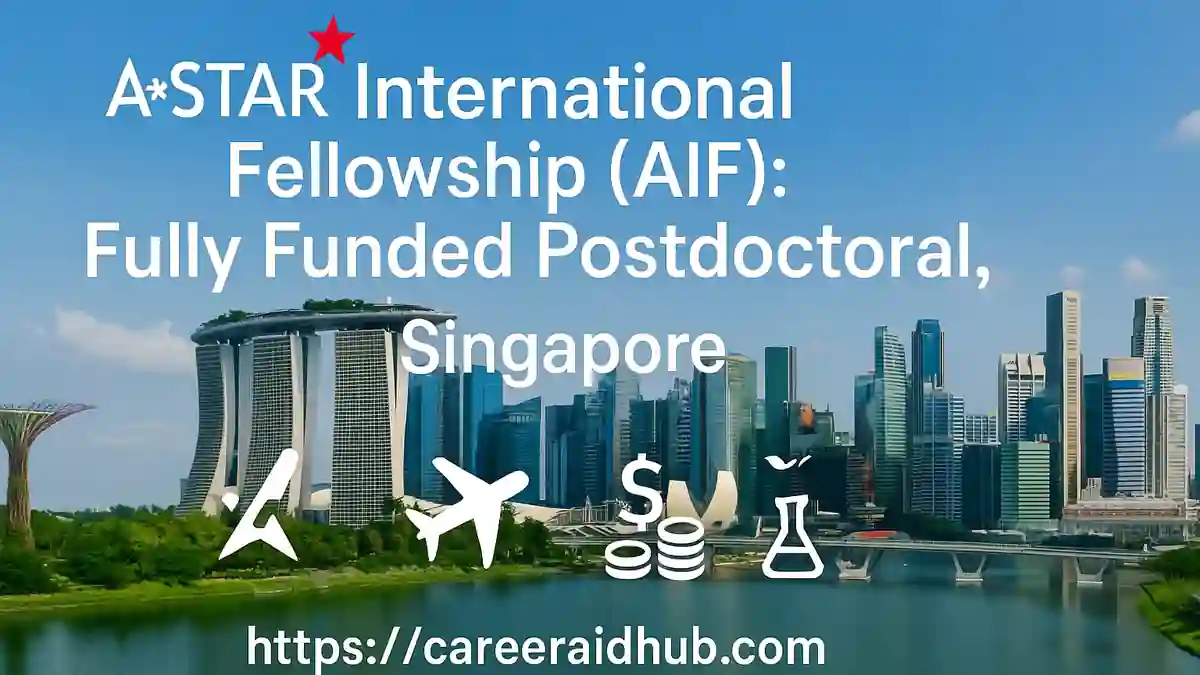The British Academy’s Knowledge Frontiers: International Interdisciplinary Research Projects (IIRP) 2026 supports HSS-led teams working across SHAPE and STEM to address transnational, planetary challenges. Designed for UK-based PIs collaborating with overseas partners, the scheme funds rigorous, genuinely integrative research with clear pathways to policy and public impact. If you’re building an equitable, cross-disciplinary consortium, this call provides a structured route to turn ambitious ideas into high-value outcomes.
This in-depth guide demystifies the British Academy’s Knowledge Frontiers: International Interdisciplinary Research Projects 2026. Learn exactly who can apply, what the fund covers, how to craft a compelling interdisciplinary case, and when to submit. Practical tips, checklists, and examples help your team align scholarship with real-world, transnational impact.
Key facts at a glance
-
-
Who leads? A UK-based Principal Investigator (PI) in the humanities or social sciences. The project must integrate disciplines across SHAPE/STEM and include at least one overseas co-applicant.
-
Funding & duration: Up to £300,000 over 24 months at 80% FEC. Projects must begin March/April 2026.
-
Timeline (Delhi/NCR readers: note UK time): Scheme opened June 2025; institutional approval and submission due September 2025;
earliest start March 2026.
-
Themes (choose one or more): Earth system governance; digital and other transformative technologies; global health (One Health); outer space governance.
-
How to apply: Submit via the British Academy’s Flexi-Grant system and follow the official Scheme Notes and Application Guidance.
Feature Snapshot (for fast comparison)
Next cycle (indicative): Based on recent cycles, expect the call to open June 2026 with a September 2026 deadline for projects starting March/April 2027—we will update soon.
What this scheme is—and why it matters
The IIRP scheme backs international, interdisciplinary research that clarifies how expertise, public understanding, and policy interact across borders. It asks teams to go beyond siloed studies and to generate insights that cut across disciplines while remaining led by the humanities and/or social sciences. Because the most pressing issues—climate, digital transformation, pandemics, and space governance—do not stop at borders, the programme prioritises work that shows how scholarship translates into practice.
What “interdisciplinary” means here
Interdisciplinarity isn’t a label; it’s a method. Successful proposals demonstrate integrated design: shared frameworks, coherent mixed methods, and iterative co-analysis that produces more than the sum of separate disciplinary parts. Reviewers look for clear intellectual leadership from HSS and credible, needed contributions from SHAPE/STEM partners.
Why the “transnational” emphasis matters
The call specifically asks projects
to illuminate
non-state and transnational actors—for example, cities, civil society, philanthropies, industry alliances, standards bodies, and regional blocs. Consequently, proposals should treat these actors not as an afterthought but as
central to the research questions and evidence base.
The four challenge domains
Your proposal must focus on one or more of these domains and engage both the technical/scientific dimensions and the governance/political complexities that make them transnational.
1) Earth system governance
Tackle climate change, biodiversity loss, ocean degradation, and pollution by analysing how governance instruments, disclosure regimes, and multi-level coalitions actually shift practices. Consider comparative cases across regions and supply chains, then map leverage points where policy and behaviour intersect.
2) Digital and other transformative technologies
Explore AI, cyber, synthetic biology, nanotechnology, and emerging platforms. Show how standards, auditing practices, safety benchmarks, and open-source ecosystems shape incentives. Incorporate STS and law alongside computer science or bioengineering to link technical risk with institutional design.
3) Global health (One Health)
Focus on human–animal–environment interfaces, surveillance, and public communication. Use anthropological and epidemiological methods together, and design equitable, community-engaged research that recognises context, trust, and infrastructure as determinants of health outcomes.
style="text-align: justify;">4) Outer space governance
Address debris mitigation, traffic coordination, property and sovereignty claims, and arms control. Combine space law, risk modelling, orbital mechanics, and economics. Moreover, examine how insurers, satellite operators, and launch providers respond to incentives and regulatory signals.
Eligibility in plain English
Principal Investigator (PI)
-
-
You must be postdoctoral or above, based at an eligible UK university or research institute, and in post for the entire award.
-
Plan to contribute ≥0.2 FTE to the award and provide evidence of capacity to lead an international, interdisciplinary team.
Team composition
-
-
Include at least one overseas co-applicant.
-
Demonstrate genuinely integrative interdisciplinarity across SHAPE/STEM.
-
Show equitable international partnerships: balanced roles, transparent governance, shared resources, and ethical data practices.
Actionable tip: Add a brief Partnership Equity Plan to your case for support—outline decision-making, budget distribution, authorship norms, data stewardship, and joint IP protocols.
What the grant covers (and the costing model)
Eligible costs
Funding can support PI and Co-Applicant time, postdoctoral (or equivalent) research assistance, travel and fieldwork, and networking/collaboration activities. Align items to tasks and milestones, and justify the link between costs and deliverables.
style="text-align: justify;">Understanding 80% FEC (and exceptions)
Awards are offered at 80% FEC, up to £300,000 over two years. In practice, the total project value at 100% FEC can be higher, but the Academy’s contribution cannot exceed the cap. For non-FEC international or non-academic partners, you may cost directs at 100% plus a 25% flat rate for indirects, where appropriate; justify clearly and keep documentation tidy.
Budgeting insight: Use a compact cost-to-workpackage table in your case. Reviewers should be able to trace every pound to a task, person, or output.
The application process and timing
Where and how to apply
Submit your application through Flexi-Grant. Draft offline, then paste cleanly formatted text into the system to avoid layout issues. Because institutional sign-off is required, coordinate early with your Research Office.
When to apply
-
-
Opens: June 2025
-
Institutional approval & submission: September 2025
-
Start & duration: March/April 2026, for 24 months
What reviewers look for (selection criteria)
Quality, significance, originality
Explain what becomes possible only through your approach. Position your project in the literature, yet emphasise novel questions, not merely a new dataset or geography.
Interdisciplinarity led from HSS
Show how HSS frames the problem and integrates partner methods. Instead of parallel strands, design shared workpackages and co-authored outputs to demonstrate integration.
Feasibility & management
Offer a realistic plan: timeline, milestones, risk register, monitoring, and decision rules. Assign clear responsibilities and present a succinct Gantt with dependencies.
Value for money
Link resources to outputs and impact. When possible, leverage co-funding or in-kind contributions; however, avoid complexity that obscures accountability.
How to shape a competitive proposal
1) Start with the actors, not just the issue
Identify the non-state and transnational actors most capable of changing outcomes—industry groups, certifiers, city networks, philanthropies, and civil society coalitions. Design data collection to capture their incentives, coalition dynamics, and implementation bottlenecks.
2) Build equitable partnerships
Co-create research questions, distribute leadership roles, and budget for mutual capacity building. Set norms for data access, authorship, and benefit sharing at the outset. Consequently, oversight meetings should be scheduled and minuted.
3) Prove interdisciplinarity as method, not a label
Use mixed methods that genuinely require more than one discipline: e.g., doctrinal legal analysis + network science; ethnography + epidemiology; qualitative comparative analysis + engineering risk models. Integrate results iteratively, not just at the end.
4) Design for policy and public relevance
Articulate pathways to impact: decision memos for public bodies, practitioner toolkits, multilingual briefs, and open educational resources. Plan stakeholder workshops at key decision points, not as one-off dissemination events.
5) Budget smartly under 80% FEC
Right-size personnel time and PDRA roles; phase fieldwork to match risk windows; and cost collaboration strategically (workshops, translation, community liaison). Additionally, document procurement and safeguarding for higher-risk sites.
6) Address compliance early
Prepare your Gender Equality Statement, ethics approvals, research security considerations, data management plan, and safeguarding protocols. Where relevant, pre-register analysis plans to enhance credibility.
Example angles by theme (to spark ideas)
-
-
Earth system governance: Compare how city-level net-zero coalitions, corporate disclosure regimes, and trade-related standards alter emissions across specific value chains (e.g., cement, steel, shipping). Combine political economy, industrial engineering, and geospatial analysis to locate enforcement gaps.
-
Transformative technologies: Examine AI safety governance across regions and standards bodies; track interactions among audits, benchmarks, and incident reporting. Blend science & technology studies, law, and computer science to link assurance with accountability.
-
Global health / One Health: Test cross-border zoonoses surveillance with community health networks and veterinary services. Merge anthropology, epidemiology, and environmental analytics to understand uptake and trust in interventions.
-
Outer space governance: Evaluate debris mitigation via operator incentives, insurer requirements, and bilateral traffic coordination. Combine law, orbital dynamics, and risk pricing to surface pragmatic policy levers.
Common pitfalls to avoid
-
-
“Token” interdisciplinarity: Parallel workstreams without integration. Remedy this with co-authored workpackages and joint interpretation checkpoints.
-
One-sided partnerships: Unbalanced roles or opaque budgets can derail proposals. Set equitable governance and resource flows.
-
Late internal approvals: Flexi-Grant requires institutional sign-off. Therefore, finish drafts well before the deadline and allow Research Office review.
Backlink-worthy element: Include a short Methods Annex (pre-registration, robustness checks, open data plan). Editors, practitioners, and other PIs often cite and share such practical resources.
Final checklist before you submit
-
-
A UK-based HSS PI commits ≥0.2 FTE and remains in post throughout the award.
-
You have at least one overseas co-applicant and a plan for equitable partnership.
-
The project clearly aligns to one or more of the four domains and centres non-state/transnational actors in its design.
-
The budget follows 80% FEC, with any non-FEC partner costs justified transparently.
-
You address selection criteria, gender equality, research security/ethics, and risk management.
-
The submission is loaded into Flexi-Grant, with institutional approvals queued well in advance.
Review & update schedule (for your website):
-
-
Quarterly light review (Dec/Mar/Jun/Sep) to refresh dates, FAQs, and related links.
-
Comprehensive update each June to capture any new guidance for the next cycle.
Official resources
-
-
Call page & application portal: See Reference.
-
Scheme guidance notes (including eligibility and costing): See Reference.
-
Application Guidance: Available on the official site.
Summary Table
| Item |
Details |
| Program Name |
Knowledge Frontiers: International Interdisciplinary Research Projects (IIRP) 2026 |
| Host Country |
United Kingdom |
| Funded By |
The British Academy |
| Duration |
24 months |
| Study Mode |
Full-time collaborative research with international partners |
| Eligibility |
UK-based HSS PI (postdoctoral or above); genuinely interdisciplinary across SHAPE/STEM; ≥1 overseas co-applicant; HSS-led throughout |
| Financial Support |
Up to £300,000 at 80% FEC (PI/Co-I time, PDRA, travel/fieldwork, networking & collaboration costs) |
| Domains |
Earth system governance · Digital & transformative technologies · Global health (One Health) · Outer space governance |
| Deadline |
September 2025, 17:00 BST |
| Project Start Window |
March/April 2026 |
| Application System |
British Academy Flexi-Grant |
| Official Website |
thebritishacademy.ac.uk/funding/knowledge-frontiers-international-interdisciplinary-research/ |
| Next Cycle |
Expected June 2026 open → September 2026 deadline → March/April 2027 start — we will update soon |
References
British Academy – International Interdisciplinary Research Projects 2026.
Conclusion
The IIRP 2026 scheme rewards rigorous, HSS-led interdisciplinarity that speaks directly to transnational challenges and the actors who shape them. If your project integrates methods, shares leadership equitably, and plans for credible policy and public engagement, you are already on the right path. For authoritative details and any updates, consult the British Academy’s official materials.
Call to action: Assemble your core team, draft a one-page concept aligned to one domain, and book a Research Office meeting this week. Early coordination is the simplest way to convert a strong idea into a fundable, high-impact proposal.
Frequently Asked Questions
What is the British Academy Knowledge Frontiers: IIRP 2026? It funds HSS-led, interdisciplinary, international projects addressing transnational challenges across four domains. Moreover, UK-based PIs collaborate with overseas partners for 24 months.
Who can be the Principal Investigator (PI) for IIRP 2026? A UK-based HSS academic, postdoctoral or above, must lead. Additionally, the PI commits at least 0.2 FTE and remains employed for the full award.
Do projects require overseas partners and interdisciplinarity? Yes. Include at least one overseas co-applicant and integrate SHAPE/STEM disciplines. Consequently, design truly joint workpackages, shared methods, and co-authored outputs.
How much funding does IIRP 2026 provide? You can request up to £300,000 at 80% FEC for 24 months. Moreover, justify each cost against tasks, staff time, travel, fieldwork, and collaboration.
Which research themes or domains are eligible? Choose one or more: Earth system governance; digital and transformative technologies; global health (One Health); and outer space governance. Importantly, address governance and technical dimensions together.
How do I apply for IIRP 2026 funding? Apply through Flexi-Grant. Then secure institutional approval before submission, complete scheme sections carefully, and upload required documents, budgets, and statements on ethics, gender equality, and research security.
What costs does the grant cover under 80% FEC? It can cover PI/Co-Applicant time, postdoctoral assistance, travel, fieldwork, and collaboration. Additionally, eligible non-FEC partners may claim 100% directs plus a 25% indirects flat rate.
What are the main evaluation criteria for IIRP 2026? Panels assess quality, significance, originality, interdisciplinary integration, feasibility, management, and value for money. Therefore, align aims, methods, timelines, and budgets tightly.
When is the deadline and project start window? Expect a September deadline with projects starting March or April. Therefore, plan drafting early and book Research Office approvals well in advance.
Premium Mentorship for a Stronger Application
- Premium Mentorship: personalised 1:1 guidance for this and similar opportunities
- In-depth review of your CV, academic profile, and key statements
- Aligned with international selection criteria so your profile matches what panels expect
- Stronger, more compelling narrative for highly competitive calls
- Step-by-step support from opportunity mapping to final submission (fee-based)
Subscribe Premium Mentorship










